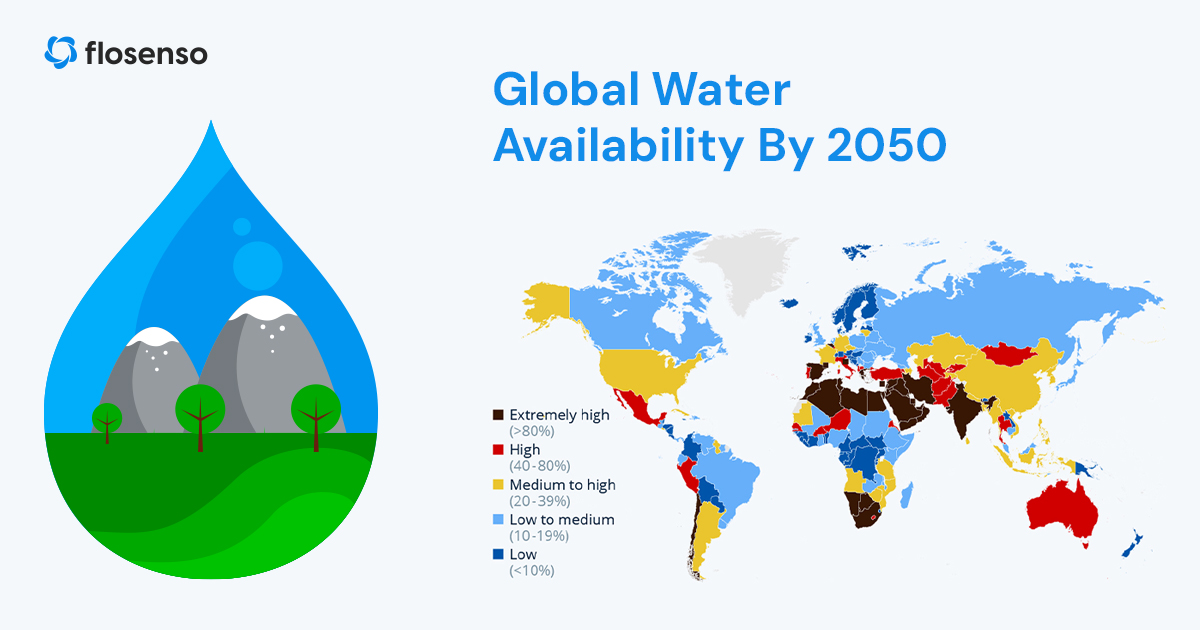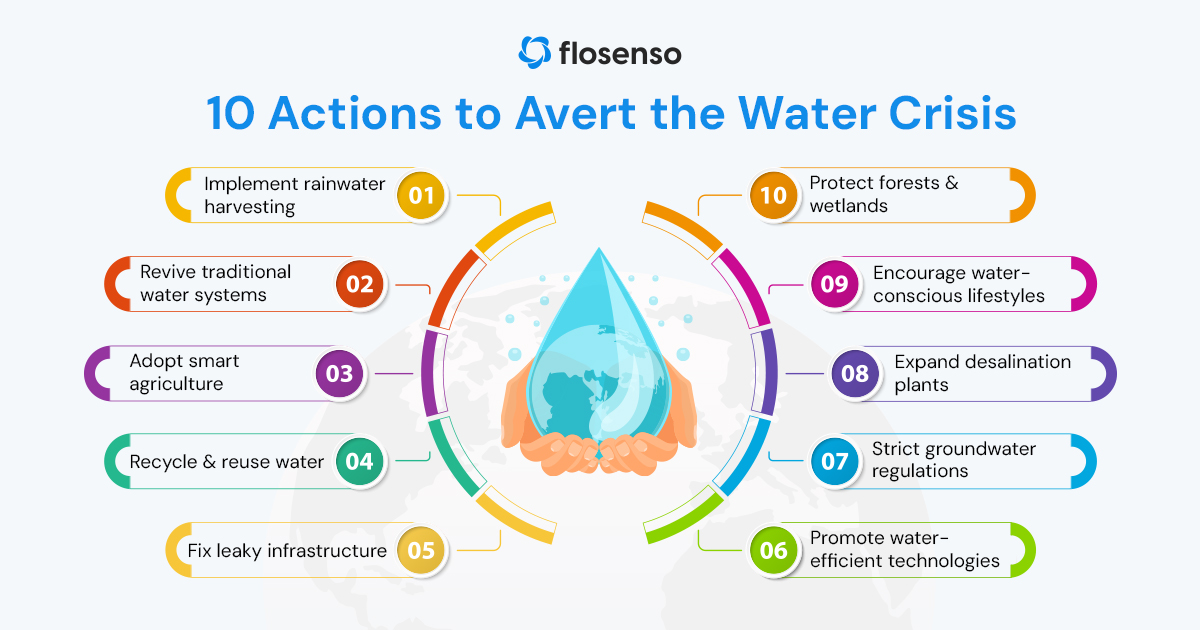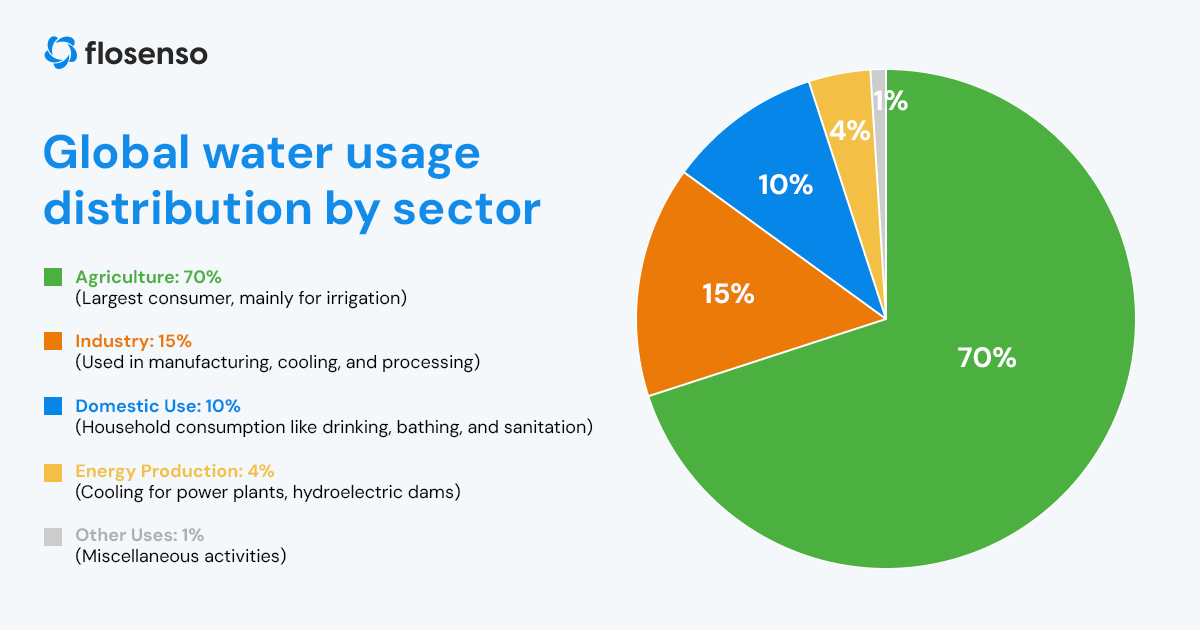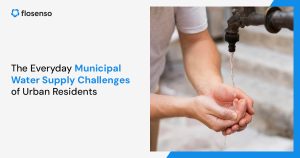From megacities running dry to entire rivers vanishing, the global water crisis is happening right now, and it’s hitting closer to home than you’d expect. While you enjoy unlimited access to clean water, millions of people are queuing up for hours just to fill a bucket. What would you do if tomorrow the government decides to ration out just 25 litres of water per person each day? You wash, drink, cook, water your garden or do whatever. You are expected to survive on just 25 litres of water a day! Sounds dystopian, right? But in some parts of the world, it’s already happening. Water scarcity is no longer a problem of the future, it’s a crisis we have long denied and are living through today.
On this World Water Day, let’s look at the shocking truths behind water scarcity, the mistakes we’ve made, and most importantly, what you can do before it’s too late.
How Bad is the Global Water Crisis?
Water covers 70% of our planet, yet only 3% is available as freshwater, and less than 1% is accessible for drinking, agriculture, and industry. That tiny fraction which is available is under extreme stress, and the consequences are devastating. 2.2 billion people lack access to safe drinking water. In developing nations, millions of people walk kilometers every day just to fetch water. The water they collect is often contaminated with bacteria and pollutants, leading to deadly waterborne diseases. In cities, rising populations and failing infrastructure are putting immense pressure on already scarce resources. Industrial pollution, reckless groundwater extraction, and deforestation are worsening the situation, turning once-thriving water sources into dry wastelands.

In India alone, major cities like Bengaluru, Chennai, and Delhi are on the verge of severe shortages, with over-extraction of groundwater pushing them toward Day Zero, a term that once seemed hypothetical but is now a terrifying possibility. We were witness to the alarming water crisis in India, especially Delhi and Bengaluru, in 2024. Earlier too, Chennai’s reservoirs went bone dry in 2019, forcing residents to wait in hours-long queues for water tankers. The municipal water supply is failing, forcing people to rely on private resources, which are costly and contaminated.
In 2018, Cape Town was days away from shutting off its water supply. Residents were limited to just 50 litres per day, barely enough for a short shower and basic cooking needs. São Paulo in 2015 had to shut off water supplies for 12 hours a day due to extreme shortages. Barcelona, in Spain, had to import freshwater from France in 2008 just to survive.
If these major cities can run out of water, so can yours.
To put the facts straight:
- 785 million people lack access to clean drinking water, and 884 million still use unsafe water sources, exposing them to deadly diseases like cholera and dysentery.
- 2.3 billion people live in water-stressed countries, struggling daily to access sufficient water for basic needs.
- By 2025, 50% of the world’s population will live in areas facing severe water shortages.
- In many places, water is being extracted faster than nature can replenish it, pushing major cities toward an inevitable Day Zero.
Water scarcity isn’t just affecting remote desert regions, but also hitting megacities, industrial hubs, and thriving economies. The problem is growing worse every year, and soon, your city could be next. This what the World Water Day is here to remind us. Take guard, else the global water crisis shall play havoc!
What Led Us to This Alarming Water Crisis?
It’s not just about droughts. The real problem? Human mismanagement and waste. It’s easy to blame climate change alone, but the truth is, humans have mismanaged water for decades. Our growing demands, inefficient systems, and lack of urgency have made this crisis worse. The day is not far when a litre of water will cost more than fuel, and your daily water allowance is strictly rationed, and taps run dry by noon.
In some parts of the world, this is already happening. In Mexico City, residents in poorer neighborhoods go weeks without running water, relying on expensive water trucks. In Jordan, people receive municipal water only once a week, storing it in rooftop tanks to last until the next supply. In India’s Bundelkhand region, farmers have abandoned their fields due to worsening droughts, leading to mass migration.

This isn’t science fiction. Here is the real picture about what is worsening the situation.
- Aging water infrastructure – Leaking pipes in cities waste millions of litres of water daily. In 2023, the water supply company of London reported daily losses of 570.4 million litres, marking its lowest leakage levels. Is this loss low?
- Unplanned irrigation – Agriculture consumes 70% of freshwater, but outdated irrigation methods waste a huge chunk of it.
- Contaminated water resources – 80% of the world’s wastewater is dumped back into rivers and oceans untreated, poisoning drinking water sources. Over 80% of India’s surface water is polluted with sewage, industrial waste, and chemicals. Around 200,000 people die annually due to waterborne diseases (NITI Aayog).
- Depleting water levels – Groundwater is vanishing. India, China, and the U.S. are extracting water from underground aquifers faster than it can naturally refill. In Chennai alone, the underground water level has receded by 4 meters from the surface.
- Wastewater management – India wastes 40% of its treated water. Despite severe shortages, India loses its treated water due to leakages, mismanagement, and inefficiencies in supply systems.
- Population explosion –With the global population crossing 8 billion, the demand for freshwater has surged beyond sustainable levels. More people mean higher consumption, thereby putting immense pressure on already scarce water resources.
- Deforestation – Forests play a crucial role in maintaining the natural water cycle by helping rainwater infiltrate the ground and recharge aquifers. Rampant deforestation has led to reduced rainfall, increased soil erosion, and faster water runoff, causing rivers and lakes to dry up, while making regions arid and drought prone.
- Global Warming – Rising temperatures due to climate change intensify evaporation, reducing the availability of surface and groundwater. The glaciers, a major freshwater source, are disappearing at an alarming rate, further exacerbating water scarcity worldwide.
Undeniably, climate change is making it worse, with rising temperatures causing unpredictable rainfall, prolonged droughts, and increased evaporation, accelerating the crisis. However, we cannot just sit and watch the crisis engulf the world. Day Zero is impending, if we do not act now!
Water Management is the Answer
Water scarcity isn’t just about running out of water, it’s about how we manage the water we have. Right now, the world wastes 45 billion liters of water every day due to leaks, inefficient use, and poor infrastructure. But with smart water management, we can turn the tide and ensure a sustainable future. We need a smarter approach to managing water. Countries like Israel have already revolutionized water conservation by recycling 85% of their wastewater and investing in desalination plants. Singapore has turned wastewater into potable drinking water using advanced filtration systems.
But on a smaller scale, smart water management technologies like sensor-based irrigation, real time water supply management, water sensors, and smart water level controller for tanks can help homes and industries track usage, detect leaks, and prevent overflow, ensuring every drop is used efficiently.
Smart Water Management uses technology, data, and efficient practices to optimize the use, distribution, and conservation of water resources. It combines IoT (Internet of Things), AI-driven analytics, and automated control systems to prevent wastage, improve supply, and ensure sustainable water use.
We can no longer afford to be wasteful. Investing in smart water management is our best bet for survival.
10 Actions that can Help Avert the Water Crisis
The water crisis is massive, but it is not irreversible. Around the world, individuals, communities, businesses, and governments are implementing strategies to conserve, manage, and restore our water resources. Here’s how people are fighting back, with real numbers to prove that change is happening.

Investing in smart water management
Technology has become a key player in the fight against water scarcity. Countries, cities, and households are adopting smart water solutions to monitor, recycle, and optimize water use. Singapore recycles over 40% of its wastewater and has set a goal to increase this to 55% by 2060 through its innovative NEWater program. Israel has become a global leader in water efficiency, recycling nearly 90% of its wastewater for agricultural use. Use of smart water meters helps reduce water wastage by 20-30% in cities. Installing smart water level controllers for tanks, prevents overflows and water wastage at household and industrial levels, reducing wastage of potable water.
Restoring and protecting freshwater ecosystems
Wetlands, rivers, and lakes act as natural water storage and filtration systems, but they are disappearing at an alarming rate. Governments and conservation groups are working to restore these ecosystems. The Namami Gange Project in India, is working to clean and rejuvenate the Ganga River, which supports 40% of India’s population.
The Pantanal Wetlands in South America, one of the world’s largest freshwater ecosystems, are being protected through conservation programs that preserve over 80% of its biodiversity. The Colorado River, once on the brink of drying up, saw partial restoration through agreements between the U.S. and Mexico to allow water to reach the delta.
Changing agricultural practices
Agriculture accounts for 70% of global freshwater use, and inefficient irrigation is a major source of waste. But farmers are adopting sustainable techniques to reduce water consumption. Drip irrigation, which delivers water directly to plant roots, reduces water use by 30-70% compared to traditional irrigation. In India, the “More Crop Per Drop” initiative is promoting efficient water use, helping farmers save up to 40% of their usual water consumption. Desalination plants are turning seawater into drinkable water for farming, in Saudi Arabia, where desalinated water accounts for over 50% of the country’s water supply.

Strengthening water infrastructure
In many cities, aging water infrastructure leads to massive water loss. Fixing leaks and modernizing municipal water supply systems can save billions of litres annually. California has invested $7.5 billion in water infrastructure projects to repair leaking pipes, upgrade treatment plants, and build reservoirs. Countries like the Netherlands are integrating advanced flood control systems to prevent sea-level rise from contaminating freshwater sources.
Promoting individual water conservation
Household water use accounts for 10-15% of total consumption, but small changes at home can have a big impact. Managing tank overflows and water wastage with smart water level controllers can save precious potable water. Fixing leaks can save up to 40,000 litres of water per household per year. Shorter showers can reduce daily water use by 50 litres per person. Switching to water-efficient appliances can cut home water consumption by 20-50%.
Rainwater harvesting
Rainwater harvesting is one of the simplest yet most effective ways to reduce dependence on groundwater. By capturing and storing rainwater, India aims to meet up to 40% of its water needs. If all urban rooftops implemented rainwater harvesting, millions of litres of water could be stored during monsoons and used throughout the year. Tamil Nadu made it mandatory, boosting groundwater levels. Delhi’s rooftop projects are also making an impact.
Water recycling & reuse
Recycling wastewater is crucial to addressing water scarcity. Industries and cities must treat and reuse wastewater instead of extracting more freshwater. Bangalore recycles 10% of its wastewater, but it aims to increase this to 50% within the next decade. Mumbai’s new sewage treatment plants will treat and recycle wastewater for non-drinking purposes like gardening and construction. Companies like Coca-Cola and ITC have set up water treatment plants to recycle wastewater, reducing their freshwater dependency.
Enforcing water policies
Strict water governance is critical to stop excessive groundwater extraction and industrial pollution. Stronger policies can help prevent misuse and protect water sources. The Central Ground Water Authority (CGWA) has imposed restrictions on excessive groundwater extraction in critically affected areas. Individuals and organizations must be held accountable for polluting water bodies, and stricter laws should ensure that they treat wastewater before disposal. The government must ban the use of plastic. Microplastics and larger plastic debris contaminate water bodies, posing risks to wildlife while entering the human food chain.
Installing desalination plants
With a 7,500 km coastline, India has immense potential to convert seawater into freshwater through desalination. Coastal states can use desalination to ease freshwater shortages. Chennai’s desalination plants currently supply 100 million litres of drinking water per day, reducing dependence on monsoon-fed reservoirs. Mumbai and Gujarat are planning large-scale desalination plants to provide a steady water supply during dry seasons.
Reviving traditional water systems
India’s ancient water conservation systems like stepwells, tanks, and lakes, once helped communities manage water efficiently. Restoring these structures can help recharge groundwater, prevent floods, and store water during droughts. Rajasthan and Karnataka are leading the way in bringing these methods back.
Smart water management, conservation efforts, and strong policies can ensure that future generations have access to clean and sufficient water. These are just small water crisis solutions. However, small changes when multiplied create a massive impact.
The Future is In Our Hands. Save it!
Water scarcity isn’t a distant threat, but it’s happening right now. The next Day Zero could hit your city, your neighborhood, your home. But there’s still time to change course.
Don’t wait for World Water Day, to remind you of the eventuality. Always remember… “Every drop matters.” The choices you make today will shape the future of water for generations to come. Act now, because once the water runs out, there’s no turning back. By making small changes, fixing leaks, using water-efficient appliances, reducing the wastage, and reusing what we can, we can still mold the future. Let us create a world where no one suffers from water shortages, where lakes and rivers thrive, and where every child grows up knowing they will always have enough to drink.
Every drop we save today is a promise for tomorrow. Let’s not wait for Day Zero to act. Let’s be the change!
Want to do your bit to save the drop? Reduce consumption and wastage! Discover how the Flosenso smart water level controller can help you save water and protect the future.
Check out Flosenso’s technology here.









